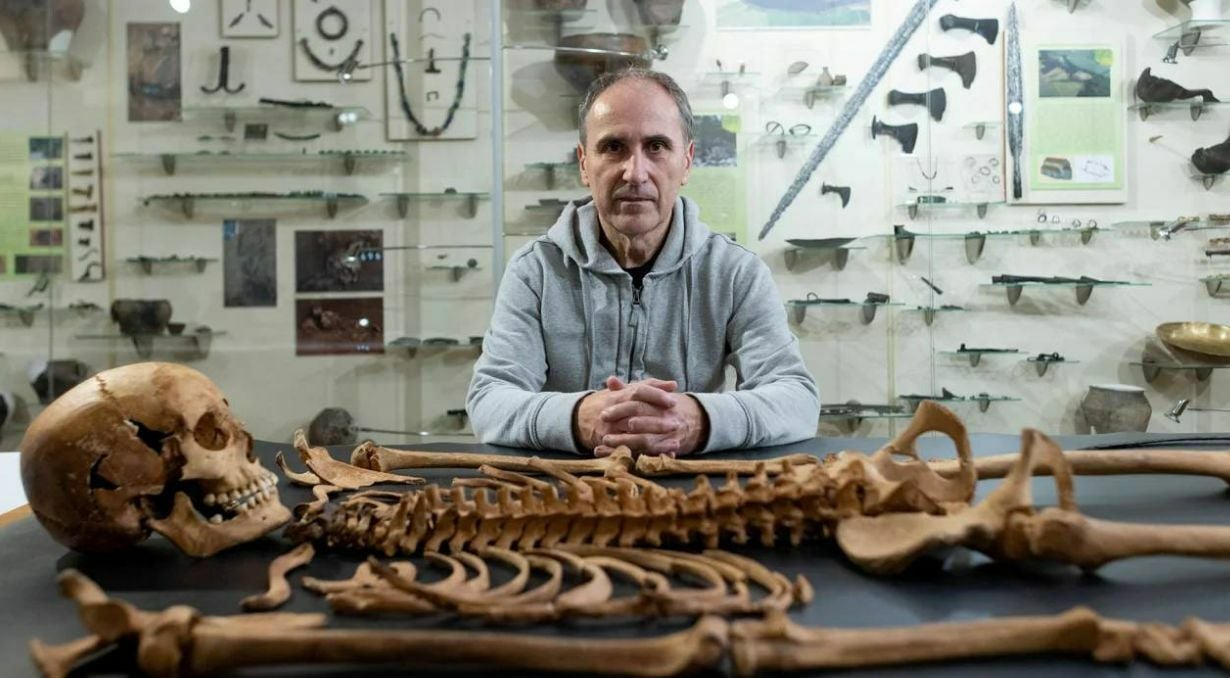Vampire child unearthed: 17th-century discovery by Polish archaeologists

Polish archaeologists have unearthed the skeletal remains of a young boy, believed to be between six and seven years old, at a 17th-century cemetery. The body of the vampire child was buried face-down, with iron chains wrapped around his legs, a practice believed to prevent resurrection.
Dariusz Polinski, a scholar specialising in Middle Ages burial culture at the Nicolaus Copernicus University in Torun, Poland, posited that the child was considered a vampire by his contemporaries. The fear was that he could rise from his grave and harm the living, Polinski explained.
“This cemetery is the burial place for people who were ostracised, which probably stems from the fear that they might rise from the dead. These people were suspected of being in contact with unclean forces or were considered to have abnormal behaviour.”
Previously, an adult female skeleton was discovered in the Polish town of Pien, with her feet similarly locked and a sickle around her neck. This, too, was seen as a measure to prevent her resurrection, as she was perceived to be a vampire, reported Sanook.

These findings hark back to an era when ghosts, zombies, and other supernatural phenomena were more than mere tales of fantasy. The methods of preventing the dead from rising were not only chaining their bodies but also beheading or amputating their feet, Polinski further added.
“We’ve also found graves with numerous stones placed on different body parts such as the elbows, neck, or head, to prevent the dead from rising.”
In a significant discovery, archaeologists in Egypt have recently unearthed a sphinx-like statue and the remnants of an ancient shrine in the southern region of the country. This remarkable find was made near the Hathor Temple, renowned as one of Egypt’s best-preserved ancient sites, and is considered one of the most important discoveries in decades, as confirmed by the Antiquity Ministry. Read more HERE.
Follow more of The Thaiger’s latest stories on our new Facebook page HERE.
Latest Thailand News
Follow The Thaiger on Google News:


























